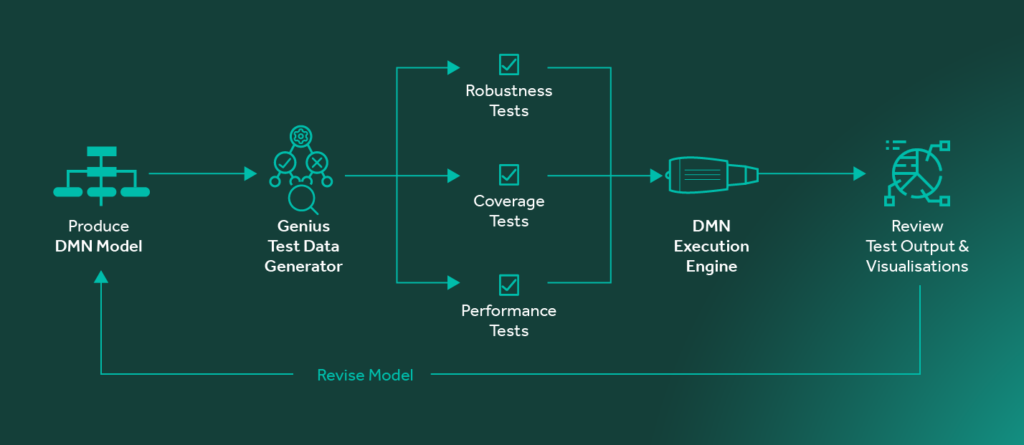RapidGen Test Data Generator (TDG)
Why are Tests Important?
The true value of automated decisions is that they yield measurable business value over all the cases to which they can be applied, and that the business understands how they deliver that value. Consequently, creating test cases, automating their use and visualizing their behavior are crucial to measuring and achieving project success.
A strong set of test cases for a decision model
- Demonstrates to what extent the model works as intended.
- Improves lay understanding of how the model works, either as a whole or in specific cases.
- Identifies any flaws in the logic.
- Measures the robustness, performance and resource requirements of the model.
Tests are most powerful when applied early, regularly and automatically. Tests should be regularly applied at least daily, not at the whim of human modelers or testers. This ensures that the model works and informs modelers immediately if it is accidentally broken by changes. Such rapid feedback allows the team to change the model quickly without risk of any setbacks.
How Can RapidGen TDG Help?

Creating tests sets manually can be prohibitively time consuming. The Genius Test Data Generator (TDG) automates the production of a wide variety of test data for any DMN model. It can read a DMN model and generate a germane test set of a specified size and data distribution including the tests sets defined below.
- The robustness test set has data with values sampled randomly from inside and outside the business-defined distribution of the inputs of a DMN model. Therefore, in some test sets, some of the data records will be nonsensical, having values outside normal ranges or inconsistent with other values. The goal in creating these is to see how gracefully the model reacts to inconsistent input and if it has any failure modes.
- The coverage test set considers both the business-defined distribution of fields and the business constraints between fields in test records. For example, the cover start date of an insurance policy should be before the end date. These constraints (which may be specified in the TDG) ensure that all test records are meaningful from a business perspective. These test sets are designed to test decision model coverage and correctness. It can also be used to visualize decision-making behavior to ensure that all the consequences of our requirements are desirable.
- The performance test set aims to test runtime speed, memory usage, latency and other non-functional performance characteristics.
Very large test sets with guaranteed coverage can be created in seconds using the TDG.
The model generated outputs of these test sets can be used to visualize the business behavior of the models The internal values generated can be used to illustrate visualizations of how the model works to improve understanding among stakeholders.
Both automatic testing and visualization are vital for the creation and maintenance of an automated decision that is correct, robust, understood, and safe and easy to change.